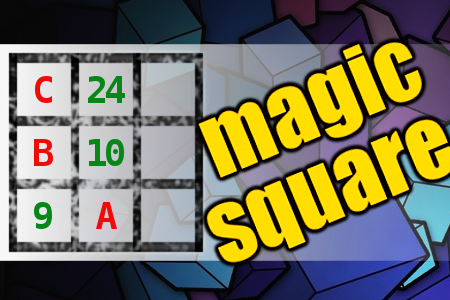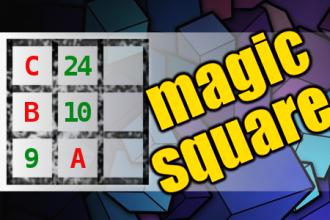MAGIC SQUARE: Calculate A+B+C
The aim is to place the some numbers from the list (9, 10, 13, 14, 15, 18, 24, 25, 28, 62) into the empty squares and squares marked with A, B an C. Sum of each row and column should be equal. All the numbers of the magic square must be different. Find values for A, B, and C. Solution is A+B+C.Correct answers: 1
#brainteasers #math #magicsquare


